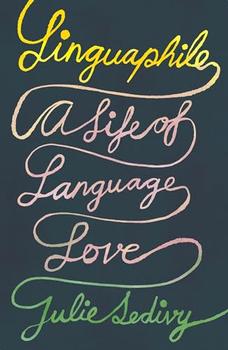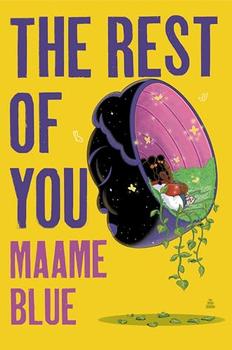
Did the ingenious Samantha Hunt really finagle a blurb from Charlotte Brontë? Yes, and she shares her insider secrets in this fun interview.
Charlotte Brontë blurbed your new novel Mr. Splitfoot?
She did.
What did she say?
Well. She's not quite as articulate as she once was. Death's rough on the English language but Charlotte said: I get the chills. I see the color of creativity which is a light green and then I see yellow or gold. I know it's interesting and should be great. Is it a true story? Is it a sad story? I get the chills even more. I feel a good
vibration. I feel good about it. There's this attraction. Yes. It's what people want. Yeah. I think it's good. It's good. I think it's a good one. Of course, it's fiction. The girl is not real. It's not a true story. Which is good. It has a lot of good energy and people, people will like it. They will keep reading it until they read the end of it. You know what I mean? It's got good motion. It's intriguing because a person will know there's something two-sided. I like the name. It will sell because it's good. It's intriguing. Yeah. It's a good one.
Charlotte's a bit rambling now. Still I'm glad she likes it.
Ms. Brontë's been dead since 1855. Was it difficult to get in touch?
It was the easiest blurb I've ever gotten. I paid seventy dollars to a woman named Ann in Albany, New York. She talks to dead people for money.
A séance?
Yes. She called it a reading, like an author's reading only a bit creepier. Ann works in a windowless room in what used to be a pre-war doctor's office. It felt like walking onto a film noir set. Her blonde wig was askew, lipstick on her front teeth and the table beside her was covered with odd, old lotions and medicines. But Ann says there's a good chance I used to be Emily Brontë and I like that.
You believe her?
Not at all but I enjoy the honesty of this particular con. The agreement's clear: you give me money and I'll create a story for you about dead people. That's not too far away from what I do. Con men are storytellers and Mr. Splitfoot is riddled with them. Nat and Ruth live in a fundamentalist foster home earning money by talking to the other children's dead parents. The man in charge of the home is scamming the child welfare system. There's a doomsday cult leader, insurance adjustors and there are some less obvious con men: a pregnant woman, a woman who's stopped talking. There's Carl Sagan, the astronomer and Linda Thompson, the singer.
I wrote Mr. Splitfoot as an argument between the faithful and the profane. I don't want mysteries to be solved, I want to confirm that mystery never ends, like outer space. So while the dead don't talk to me in a traditional haunted sense, they still affect my daily life. The dead are dead are dead but they're not silent.
And I love a ghost story.
What's your favorite ghost story?
To quote Kelly Link, "I'll give you two things. Three things. No, just two. The third
one is a secret."
My first favorite ghost story comes from Janet Cardiff and George Bures Miller. In
2004 they built a sound walk through Central Park called Her Long Black Hair. This piece features three old photos of a stranger (presumably), a woman with long black hair who had once walked through Central Park posing for photos along the way. Cardiff and Miller recreated this woman's walk, imagining the crumbs of her life though the woman and her photographer were long gone. Cardiff and Miller's piece singly leads participants down the same path the woman and then the artists followed. Layers and layers of time piling up, places
getting haunted by all the people who ever walked there. The stereo effect of the
headphones places Cardiff's footsteps and voice directly behind you. So someone who came before you is now following you? It's creepy and early on in the walk, just as you become aware of her footsteps, Cardiff whispers "Don't turn around." It's chilling and impossible advice for me to follow when ghosts abound even in the most public places. Many of the ghosts are still alive. History's everywhere and I look back all the time. Mr. Splitfoot uses this idea of well-trod routes. It follows the Erie Canal, a path loaded with ghosts and old stories. The canal serves as a spine and pathway through nearly all the meteorite landings in New York. The cult in Mr. Splitfoot is inspired by meteors. The Erie Canal easily became the River Styx for me.
What's your second favorite ghost story?
I found my second favorite ghost story on a box of Honeycomb cereal when I was a girl. A spooky 45 record one could cut from the box. I still have it. Wade Dennings' version of "The Hitchhiker." A young dead girl is given a ride home. Dennings' eerie voice and the image on the record—a full moon, an open grave—became such deep obsessions, my brain granted them permanent residencies. So of course a couple versions of "The Hitchhiker" are laced throughout Mr. Splitfoot.
It's not the only record that made the book. Carl Sagan and Ann Druyan's Golden
Records (those compilations of life on Earth that are still cruising through space onboard Voyager I and II, looking for life out there) make an appearance in Mr. Splitfoot. Books and records are the best ghosts. I think of Italo Calvino addressing his reader so directly in Chapter 1 of If on a winters night
a traveler. He's talking right to me even though he's been dead since 1985. Records are even better ghosts because they come around and around again like the themes in Mr. Splitfoot: old friends, myths, patterns in religions and cults, footsteps, daughters becoming moms. And records, just like people, can get stuck, skipping on a scratch.
Besides talking to dead people, what other types of research went into Mr. Splitfoot?
I wondered why so many religions made homes in New York State. The "burnt-over district" got its name from having no one left to convert. The Mormons and the Spiritualists were fifteen miles apart. The Oneida Community's free love grew beside the Shakers' celibacy. So I spent time in a number of religious communities in upstate New York.
The Mormons' put on a pageant each summer at Hill Cumorah where Joseph Smith found his golden tablets and translated the Book of Mormon. There's a ten story high stage at the pagent. It's full-on Broadway with Mormons of all stripes
walking around dressed as Nephites and Lamanites with brown face make-up. The Baptists were right outside the gates screaming that the Mormons were crazy. It's a true spectacle of the mysteries of religion. My 4-year old daughter understood the problem instantly when she asked, "Mama, why's everyone fighting?" Indeed.
I visited Lilydale, the City of Light, a gated Spiritualist summer camp. Just past the pet cemetery is Inspiration Stump where mediums gather in the woods to talk to the dead twice daily in season. During a private séance at Lilydale I realized just how little my disbelief matters when the woman I'd paid to contact the dead, a proper grandma with frosted hair and polyester pants, told me my dad was sitting beside me on her wicker couch. I cried like a baby. I hadn't seen my dad since he died in my twenties.
I stayed at a High Episcopalian monastery on the banks of the Hudson during Lent. I took my daughters to the Oneida Community mansion with it's beautiful
gardens. I also walked a lot as research. I wrote. I took care of my kids and it became clear that walking is mothering, walking is writing. My splitfoot isn't the devil the Spiritualists were referring to, it's one foot then the other foot; it's belief and non-belief; it's birth, then death, then birth again.
So back to the dead?
Yeah. I can't help it. Some of my favorite people are dead people.
Unless otherwise stated, this interview was conducted at the time the book was first published, and is reproduced with permission of the publisher. This interview may not be reproduced or reprinted without permission in writing from the copyright holder.




There are two kinds of light - the glow that illuminates, and the glare that obscures.
Click Here to find out who said this, as well as discovering other famous literary quotes!
Your guide toexceptional books
BookBrowse seeks out and recommends the best in contemporary fiction and nonfiction—books that not only engage and entertain but also deepen our understanding of ourselves and the world around us.